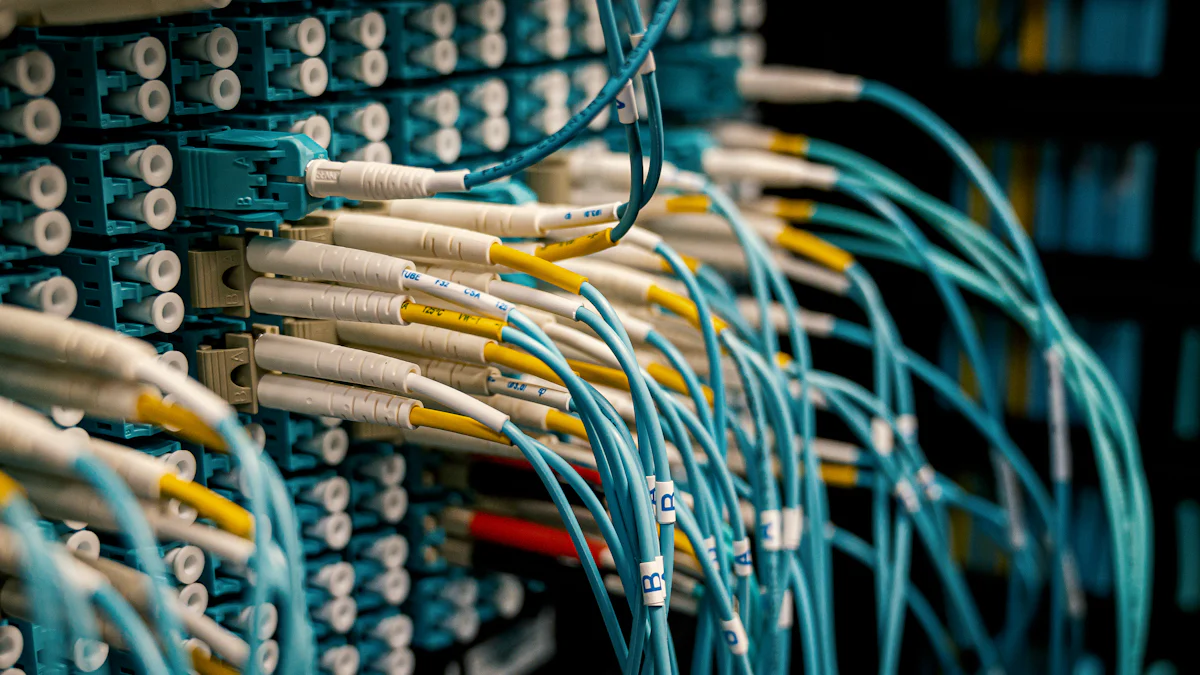Maximizing FTTH Access Links: A Guide to Evaluating Fiber Optic Fast Connector Insertion Loss
Understanding FTTH and Its Importance
Fiber to the Home (FTTH) is a cutting-edge technology that utilizes optical fiber to deliver high-speed internet, digital television, and telephone services directly to residences. The Basics of Fiber to the Home involve the installation of optical fibers from a central point directly to individual buildings, providing users with unparalleled connectivity and bandwidth.
Why FTTH Matters for Modern Connectivity can be attributed to its ability to meet the escalating demand for high-speed internet access. With the increasing reliance on digital communication, entertainment, and remote work, FTTH plays a pivotal role in ensuring seamless connectivity for households. Additionally, FTTH enables the delivery of high-definition video content, online gaming, and other bandwidth-intensive applications without compromising performance.
The Role of Fiber Optic Fast Connectors in FTTH
In the realm of Fiber to the Home (FTTH), Fiber optic fast connectors play a pivotal role in ensuring seamless connectivity and efficient transmission of data. These connectors are specially designed to facilitate quick and reliable fiber optic terminations, making them an indispensable component in FTTH networks.
Introduction to Fiber Optic Fast Connectors
What Makes Fiber Optic Fast Connectors Special?
Fiber optic fast connectors are engineered with precision and efficiency in mind, allowing for swift and accurate terminations without compromising signal integrity. Their innovative design streamlines the installation process, reducing the time and effort required for network deployment.
The Importance of Cutting End Face and Return Loss
The cutting end face of a fiber optic fast connector is crucial for minimizing insertion loss and maximizing signal transfer efficiency. Additionally, optimizing return loss is essential for mitigating signal reflections within the connector, ensuring consistent and reliable data transmission.
Evaluating Fiber Optic Fast Connectors
Key Parameters to Consider
When evaluating fiber optic fast connectors, it's essential to consider factors such as alignment precision, ease of installation, and compatibility with different fiber types. These parameters directly impact the overall performance and reliability of the FTTH network.
The Typical Insertion Loss Range
The typical insertion loss range for fiber optic fast connectors falls between 0.3dB to 0.5dB, highlighting their ability to maintain signal integrity while minimizing power loss during transmission.
Navigating Insertion Loss: Techniques and Tips

Understanding the Causes of High Insertion Loss
High insertion loss in fiber optic fast connectors can stem from various factors that compromise signal integrity and transmission efficiency. Common Pitfalls include improper connector termination, contamination, and misalignment during installation. To avoid these issues, it's crucial to adhere to best practices and meticulous handling throughout the deployment process.
The Role of Cutting End Face and Return Loss
The cutting end face of a fiber optic fast connector plays a pivotal role in minimizing insertion loss by ensuring precise alignment and optimal light transmission. Additionally, return loss mitigation is essential for reducing signal reflections within the connector, thereby enhancing overall data transfer reliability.
Practical Tips for Reducing Insertion Loss
Best Practices for Installation and Maintenance
Prioritize thorough cleaning of connector end faces to eliminate any contaminants that could contribute to increased insertion loss. Utilize specialized cleaning tools and inspection microscopes to ensure meticulous maintenance.
Implement stringent quality control measures during installation to verify proper alignment and secure terminations. Regular training and certification for technicians can significantly enhance installation precision.
Tools and Technologies to Help
Optical Time Domain Reflectometer (OTDR): This advanced tool offers precise insights into insertion loss along the fiber optic link, enabling proactive identification of potential issues.
Fiber Optic Inspection Microscope: Utilize this tool for detailed examination of connector end faces, allowing for early detection of defects or contamination that could lead to higher insertion loss.
Connector Cleaning Kits: Invest in high-quality cleaning kits specifically designed for fiber optic connectors to maintain optimal end face conditions and minimize insertion loss over time.
By understanding the causes of high insertion loss, adhering to best practices during installation and maintenance, as well as leveraging advanced tools and technologies, network operators can effectively navigate the challenges associated with minimizing insertion loss in FTTH networks.
Enhancing Your FTTH Access Link: Practical Steps
As a responsible FTTH network operator, regular monitoring and maintenance are essential for ensuring optimal performance and reliability. Keeping an eye on performance involves conducting periodic assessments of signal strength, data transfer rates, and overall network stability. By proactively identifying any potential issues or degradation in performance, operators can take timely corrective measures to maintain seamless connectivity for end-users.
In some cases, it may be necessary to seek professional help to address complex technical challenges or perform specialized maintenance tasks. Professional technicians possess the expertise and tools required to diagnose and rectify intricate issues that may arise within the FTTH access link. When routine maintenance efforts prove insufficient in resolving persistent issues, seeking professional assistance becomes imperative to uphold the network's operational efficiency.
When considering upgrading your system, exploring new technologies can present opportunities for enhancing the overall performance and capabilities of the FTTH access link. Advancements in fiber optic technology, transmission equipment, and network management systems offer potential avenues for optimizing data transmission speeds, minimizing latency, and expanding bandwidth capacity.
Making the switch to better connectors is another practical step towards fortifying the FTTH access link. Upgrading to high-quality fiber optic fast connectors with superior insertion loss characteristics can significantly enhance signal integrity and transmission efficiency within the network.
See Also
Exploring 1FO SM G657.A2 FastConnect Flat Drop Cable for FTTH
Becoming Proficient in Fiber Optic Communication: Nylon Cable for FTTR
Comprehending the SC/APC SM Fiber Optic Connector for FTTH
Grasping the 2.0 x 5.0mm 1FO Mini SC FastConnect Field Connector for SM G657.A2 Fiber
Optimizing Advantages of 1*16 CH, SC/APC Single Fiber DWDM Mux Demux


